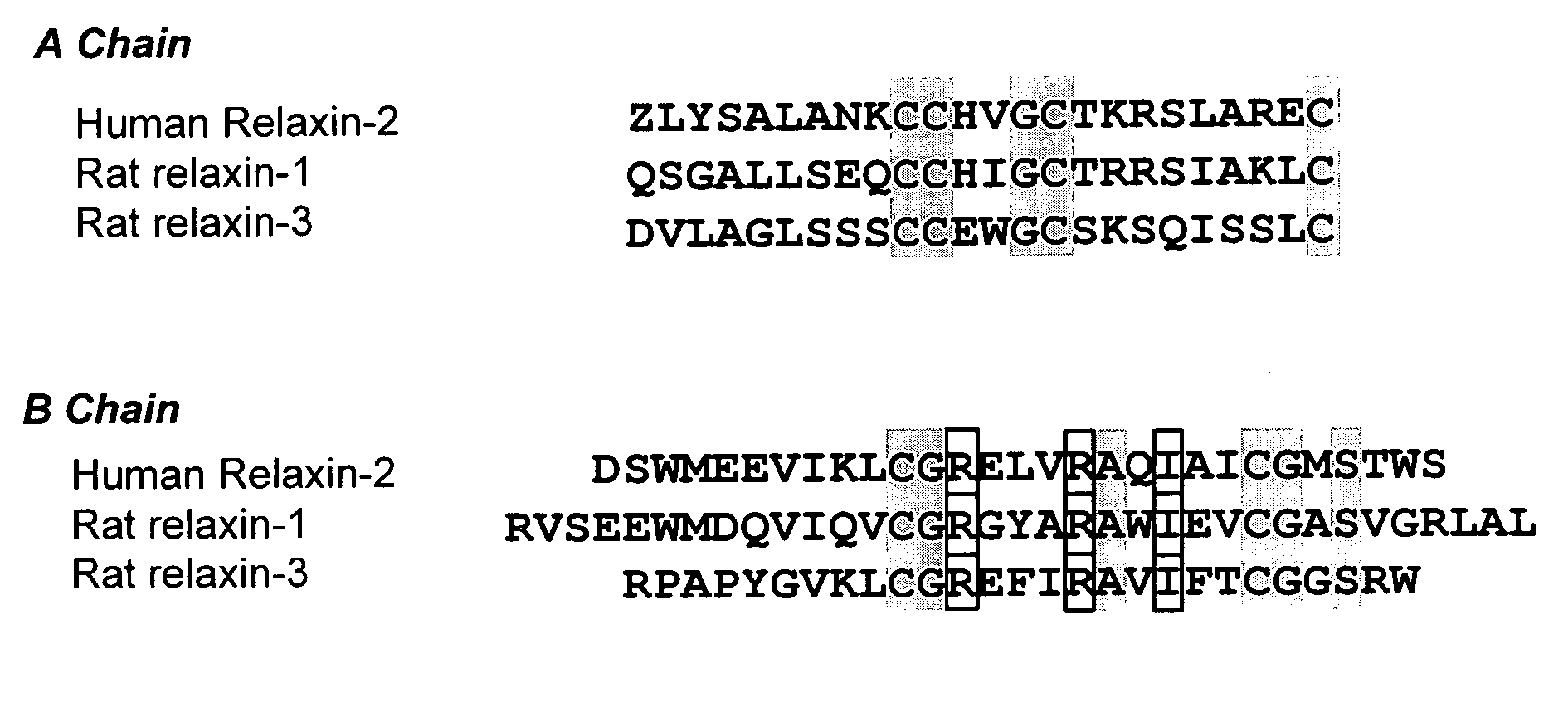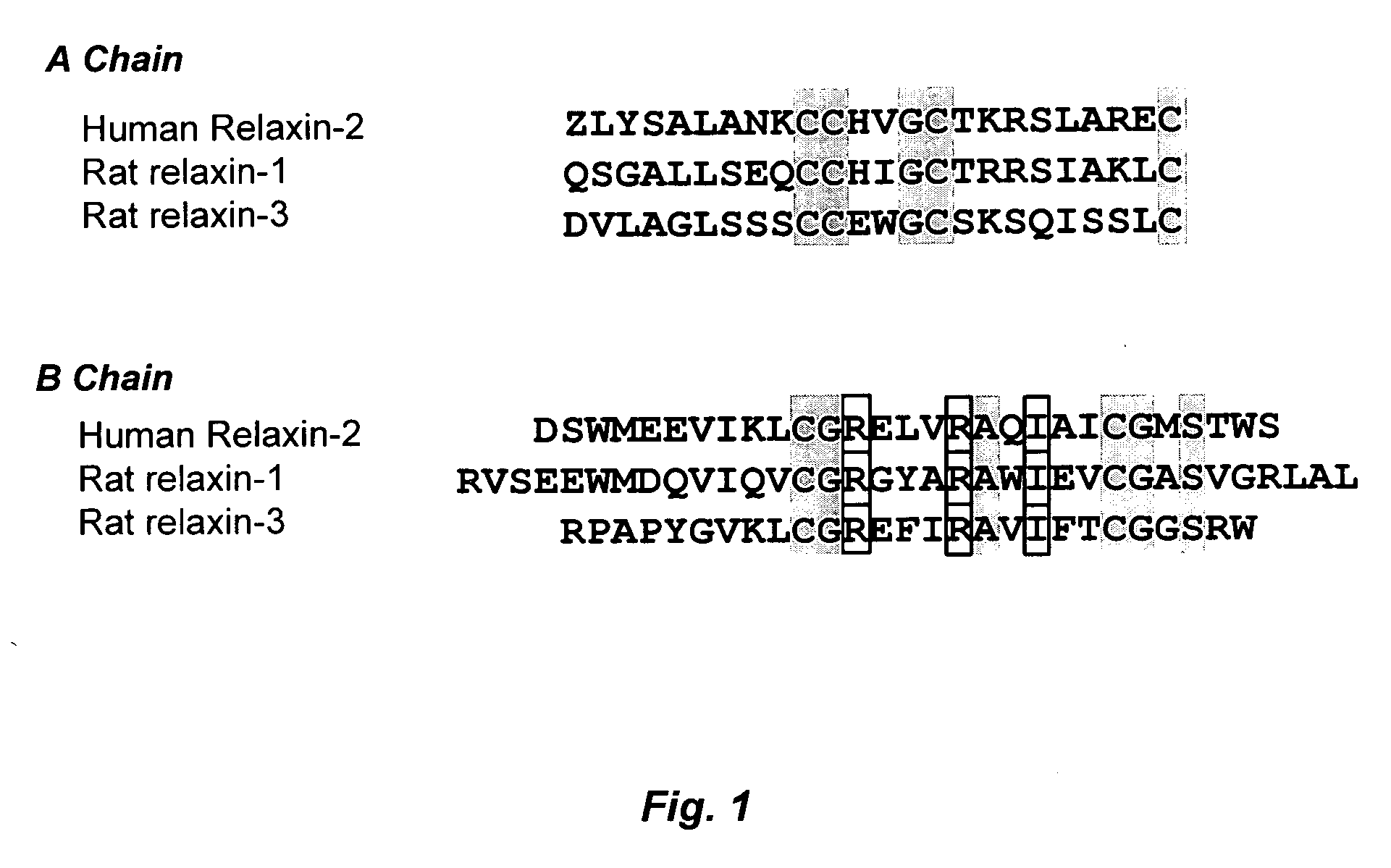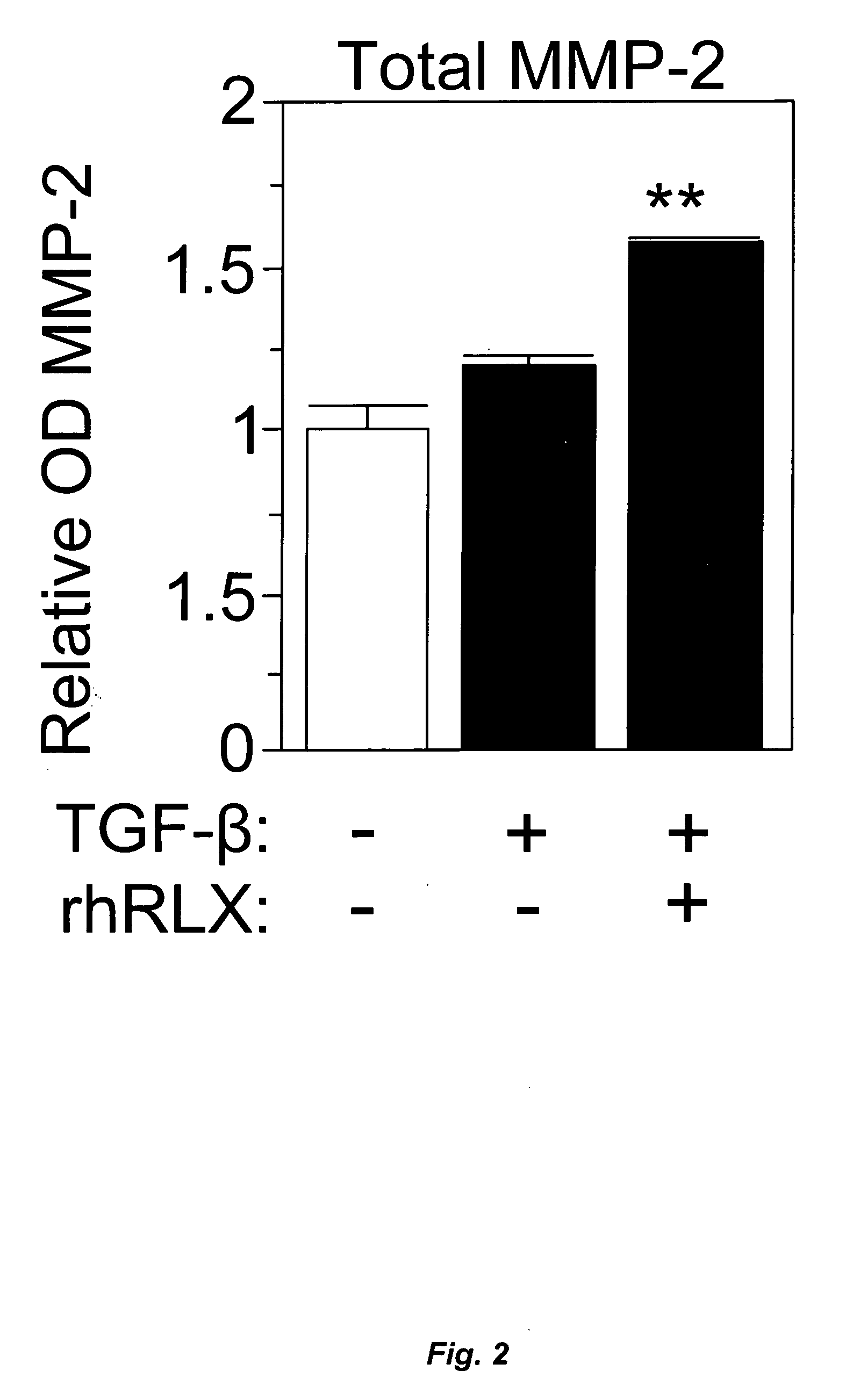Prevention of fibrosis following cardiac injury
a cardiac injury and fibrosis technology, applied in the direction of peptides, drug compositions, peptides, etc., can solve the problems of ischemic injury acute remodeling and remodeling, and achieve the effects of reducing fibrosis, reducing fibrosis and related pathologies, and reducing fibrosis
- Summary
- Abstract
- Description
- Claims
- Application Information
AI Technical Summary
Benefits of technology
Problems solved by technology
Method used
Image
Examples
example 1
Expression of Relaxin and LGR7 in Cardiac Cells
[0095] Distribution of relaxin and LGR7 expression was determined in atrial myocytes and fibroblasts, ventricular myocytes and fibroblasts, and vascular smooth muscle cells (VSMC). These cells were obtained from neonate rats using standard collagenase digestion methods. Neonate (1 day old) Sprague Dawley rats were used for tissue collection and subsequent cardiac cell isolation and preparation. The cells were maintained in DMEM supplemented with 10% fetal calf serum, penicillin (50 U / ml), and streptomycin (50 μg / ml) (DMEM-FBS). Cardiac fibroblast isolation from myocytes and subsequent preparation were performed as described previously (Gray M O et al. (1998) Cardiovasc Res 40:352-363). These preparations contained more than 95% cardiac fibroblasts as determined by morphological appearance and immunocytochemical staining. Fibroblasts were used between passages 2 and 4 for all studies.
[0096] Relaxin-1, relaxin-3, and rat LGR7 mRNA expre...
example 2
Relaxin Inhibits TGF-β- and Ang II-Stimulated Collagen Deposition by Reducing Collagen Secretion
[0098] The ability of rhRLX to modulate collagen synthesis, degradation, and deposition by cardiac fibroblasts was examined for a number of conditions. rhRLX was kindly provided by the Connetics Corporation (Palo Alto, Calif.), TGF-β was obtained from Bioscientific Australia (Sydney, New South Wales, Australia), and Ang II was obtained from Sigma-Aldrich (St. Louis, Mo.).
[0099] It has been demonstrated that Ang II induces TGF-β release from cardiac fibroblasts, and together, they act in synergistic pathways to interfere with normal structure and function of the surrounding myocardium (Chua C C et al. (1994) Biochim Biophys Acta 1223:141-147; Lee A A et al. (1995) J Mol Cell Cardiol 27:2347-2357; Campbell S E, Katwa L C (1997) J Mol Cell Cardiol 29:1947-1958).
[0100] Atrial and ventricular fibroblasts were subjected to TGF-β or Ang II in the absence or presence of rhRLX over 3 days. For ...
example 3
Relaxin Increases MMP Expression in Cardiac Cells
[0103] The effects of rhRLX on MMP expression, were determined using gelatin zymography of conditioned media, performed as previously described (Talhouk R S et al. (1991) 112:439-449). Briefly, the neonatal cardiac cells (1×105 / cm2) were treated with either TGF-β (2 ng / ml) or Ang II (10−7 M) in the absence or presence of rhRLX (100 ng / ml) for 72 h; the final 24 hours of treatment were under serum-free conditions. Equal aliquots of the collected media were then analyzed on zymogram gels consisting of 7.5% acrylamide and 1 mg / ml gelatin, and the gels were subsequently treated as previously detailed (Talhouk R S, supra). A representative zymograph of MMP-2 and MMP-9 expression is shown in FIG. 3.
[0104] TGF-β (2 ng / ml) treatment of cells induced a modest increase in MMP-2 expression over a 72-h period, as detected by gelatin zymography. However, rhRLX (100 ng / ml) treatment of cardiac fibroblasts in the presence of TGF-β (2 ng / ml) signif...
PUM
| Property | Measurement | Unit |
|---|---|---|
| Concentration | aaaaa | aaaaa |
| Fraction | aaaaa | aaaaa |
Abstract
Description
Claims
Application Information
 Login to View More
Login to View More - R&D
- Intellectual Property
- Life Sciences
- Materials
- Tech Scout
- Unparalleled Data Quality
- Higher Quality Content
- 60% Fewer Hallucinations
Browse by: Latest US Patents, China's latest patents, Technical Efficacy Thesaurus, Application Domain, Technology Topic, Popular Technical Reports.
© 2025 PatSnap. All rights reserved.Legal|Privacy policy|Modern Slavery Act Transparency Statement|Sitemap|About US| Contact US: help@patsnap.com



